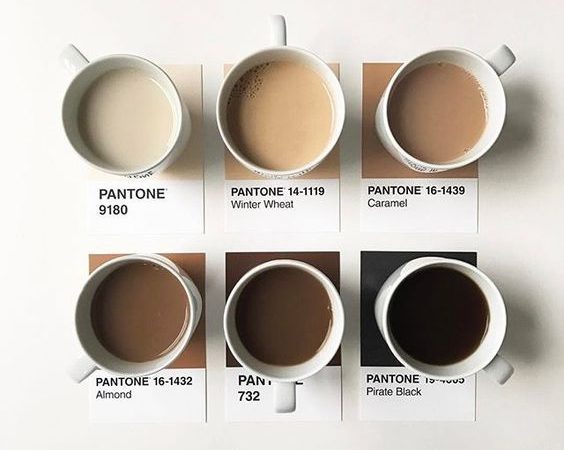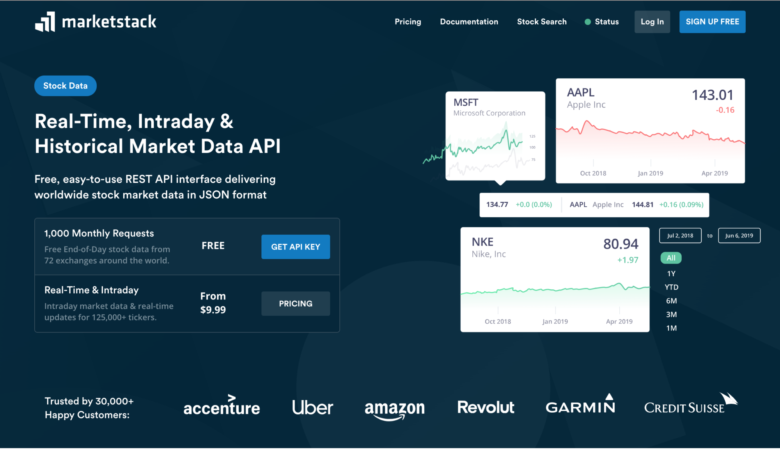Everything seems to be moving at such a faster pace than it used to. We’re seeing instantaneous developments and access to information like never before through the likes of Google and Wikipedia. All of this information has me questioning where the future of web design is heading.
Although it’s not so easy to read the future we can make some heavy conclusions and predictions about where things are heading. With current trends in the design landscape unfolding we’re starting to see paths illuminate and new ideas sprouting up. Those of us who follow these trends will be the designers who can rise above the rest and fill into the new age of technology.
Growth in User Experience
With rise given to the social media generation we’re seeing more Internet users engaged than ever before. The world wide web historically was stable ground where all pages were static digital text and images. Today we’re seeing so much more complexity and form integrated into standard web applications.
This is reflected by a rise in participation from Internet users. There are more areas today for people to interact with websites than ever before. Social networking, blog comments, live chats, and photo sharing websites are just a few to be named.

The future of web is going to bolster even further growth with user interaction. We can imagine users creating their own styles and ideas for how they want to see websites created. Variant font sizes and families are already available in most modern browsers today. When will we hold the ability to re-size websites or recolor difficult-to-read text?
Most would agree this paradigm shift comes with a heavy twofold effect. With more people accessing and contributing to the web we’re seeing less interaction required by web designers. Digital artists are able to focus on what they love most – art!
Cloud Computing Ramps Up
As web professionals we are all too familiar with hosting companies. Some are great, some are a bit more difficult, but regardless every site online requires some form of hosting. The most common is renting space on either a physical or virtual machine in a server farm somewhere around the world.

As cloud computing grows and becomes more available we’ll start to see websites being hosted “in the cloud”. By this I mean clusters of server farms will hold the site information and process backend scripts behind the scenes. Visitors will benefit seeing drastically improved load times.
On the design end of things this may also spell out room for powerful new tools. With such a surplus of power it’s no doubt developers will rush to create the first in-browser Photoshop or Illustrator equivalent. This process would flip the web design industry on it’s head for the first time in decades.
Dynamic Form Values
We’ve all seen fancy Ajax-style forms which can check if your password or e-mail address is valid on the fly. What most of us don’t see is the backend development required to create such functionality. With the power of open source scripts such as jQuery these effects are becoming much easier to create.
So how easy is it going to be filling out forms in the next web? I can imagine the signup process to be much simpler than we’ve ever seen. People logged into their Google or Facebook account may even be able to pull data directly from their profile to fill in blank fields automatically.

This process brings to the surface an even deeper idea which removes most signup pages altogether. With Oauth on it’s rise to stardom we’re seeing many applications offering profile creation through Facebook Connect and Twitter Connect. This provides a massive benefit since no password data is actually stored on anyone’s servers and you’re authenticated into a website within a few clicks.
Dynamic web design trends will allow for even further customization of this by possibly linking all of your accounts together. We could imagine HTML or JS properties being created to work with this data and apply it to web applications.
Even more interesting is how CSS will develop over the next few years. The release of CSS3’s specs has shown serious promise for browsers willing to support the new selectors. How far away are we from creating dynamic graphics or gradients directly from code?

This is one of the most exciting times to be active in the design industry. We’re seeing innovation all around and every month something new is being created or worked on. Trends will come and go over time and with each passing era we’ll see a huge leap forward in digital technology.
Keep your eyes open for some of the latest articles discussing where the future of our web is going. It’s hard to predict exactly where we can see web design in 5 years. But as we enter into the first quarter of 2011 it’s becoming clear just how quickly we’ll be finding out.





excellent writing with inspirations.
Excellent writing, excellent article. It’s an exciting time to be working on the internet, and I for one can’t wait to see how the next 10 years will pan out. Just look at what companies like DubLi are doing now! Mouth-watering stuff…
Although nobody’s right about the future, I do disagree with some of your assessments in the article:
“We can imagine users creating their own styles and ideas for how they want to see websites created”
I doubt this is going to happen on a large scale, because the opposite is occurring. The experience is becoming more closed on devices that cannot be tinkered with. The majority of the web’s users do not want to create styles.
“Visitors will benefit seeing drastically improved load times”
That assessment is a bit simplistic. Cloud hosting does not necessarily mean faster. It means hosting and scaling is largely abstracted away from you. I’m using some of Amazon’s cloud services and they are far slower than classic hosting.
“We’ve all seen fancy Ajax-style forms which can check if your password or e-mail address is valid on the fly. What most of us don’t see is the backend development required to create such functionality. With the power of open source scripts such as jQuery these effects are becoming much easier to create.”
“With such a surplus of power it’s no doubt developers will rush to create the first in-browser Photoshop or Illustrator equivalent. ”
There are already attempts made but a true PS experience on the web is not possible due to latency, which even is too large on the fastest network connection possible. Maybe hybrid models of offline/online processing will emerge though.
How does jQuery make writing those back-end scripts easier? And what does it have to do with the future when it has been here for years?
Overall, I think your article is mostly an assessment of things already happening, not really something in the future.
“It’s hard to predict exactly where we can see web design in 5 years. But as we enter into the first quarter of 2011 it’s becoming clear just how quickly we’ll be finding out.”
This is true. Excellent writing.
What about information manipulation?
More and more governments are implementing ways to control / censore the information shared over the internet.
I wouldn’t want the internet to be come the next TV. We have enough of brainwashing.
And also.. al these posts written just for the sake of writing stuff to keep people coming to your website so you can sell ads.. also this will come to an end, i hope soon. With all the respect of the world to your work, unfortunately I keep seing this kind of post on every design blog I follow.
I’d prefer to see less articles but more original and authentic.
Cool writing and very precious ideas. We will see what future will show
I just love your article….
so much information , style and the idea is amazing…
Let’s keep users creating content and designers creating style (please!)
GREAT INFORMATION ON WEB DESIGN!
Great write up, I like all the main points. Don’t you think the web will hit a ceiling in speed though. As sites get so much more complex and engaging with interactivity won’t the speed still hit take a hit bring us to the types of load times we’re use to right now. I hope I’m wrong but it seems like there has to be a leveling point as both speed and quality of websites keeps getting better. Just a thought.
“People logged into their Google or Facebook account may even be able to pull data directly from their profile to fill in blank fields automatically.”
This would scare me. Whatever the future holds for the internet, one thing will continue to be true… there will always be security issues and hacking and spamming. I, for one, will be keeping all my accounts separate on every single website I visit. Possibly even creating a new email address just for specific sites.
That’s so true. I’m always wary of giving away my information on the web. I hope the stuff about signing into facebook and all my information being filled in automatically never happens :S
No worries, 3rd party apps will never get to use your personal info without you giving explicit permission for it.
That’s how oAuth works:
– You land at a 3rd party site
– Site allows you to connect to lets say Facebook
– You get redirected to Facebook
– You authenticate there, if not already
– You get a dialog where the 3rd party app requests permission to use/do some things related to your profile.
– You can choose to allow/deny such request
– You get redirected back to the 3rd party app where the app now has the access to your account, but only if you granted it that access.
This may sound counter-intuitive but it can in fact be more secure to connect your account that way, as you have fine-grained control compared to the one-site-one-account approach.
You can kiss XAML good-bye. No one programming for cross-platform capability is going to take this serious unless they are a fan-boy.
I’ve worked on countless projects that tried to use those technologies only to see them remanded to the “thought we could do more” shelf.
I’m sorry, but I don’t really think this article does anything more than throw a few half baked ideas at us.
There’s no mention of how facebook could easily change the way people search for websites.
Or how print and traditional tv based media is losing ground to the internet. Bandwidth usage for video is increasing at a huge rate.
And what about smartphone mobile services and apps? With smart phones getting smarter this market will continue to grow exponentially.
And your view on cloud computing is.. erm.. clouded. “the cloud” is just another fancy buzzword for on-demand virtual server based IT. What do you think shared hosting uses?
Checking your emails and viewing documents in your browser is a form of cloud computing. It’s more important on a enterprise level and will have a limited affect on most web projects. It’s a more cost effective means of managing an IT infrastructure and offering ‘on-demand’ performance. Most web hosts already have systems like this in place and have done for years.
The one thing I can see happening in the future is the quicker implementation of newer technology, which for web designers would relate to better browsers.
The areas I see affecting designers/developers the most in the future will be smartphone support, micro payments, print media going online, tv streaming, custom apps and support for a large number of devices and browsers.
But the biggest difference will be seen from old browsers finally losing any noticeable market share.
Yes, Now it is the time to express views. Well quality work speaks itself. See the number of people who commented the first day itself. Cloud Computing is really the future.
this article was fluff and filler. You basically repeated things that have been said a million times before. I understand that keeping a blog is hard work and making sure you have enough posts so people keep reading and you keep selling ad space is important, but you could be a bit more original.
Interesting article as you hit that nail square on the head!
Hey, I feel that no matter where the web goes in the not to distant future it will be an improvement for the better. A more dynamic experience from a users perspective sounds great, allowing the person browsing the web and feel in total control of their personal data is something to consider too. Lets just hope that with the change of web trends our users change their old habits like using Internet explorer 6.
I prefer ‘digital artists’ to be messing with images & photos, not websites thank you very much.
Economies of scale have finally arrived at the web development department. The ability to integrate is more important now than the ability to build from scratch and there must be countless web shops out there with massive investments in custom CMS that are now simply switching to WordPress, ExpressionEngine, etc. Web hosting is another business that is going to be completely transformed by that large-scale cloud computing platforms. Inevitably in any industry, the little guy gets squeezed out. Time to find the next niche whatever it may be.